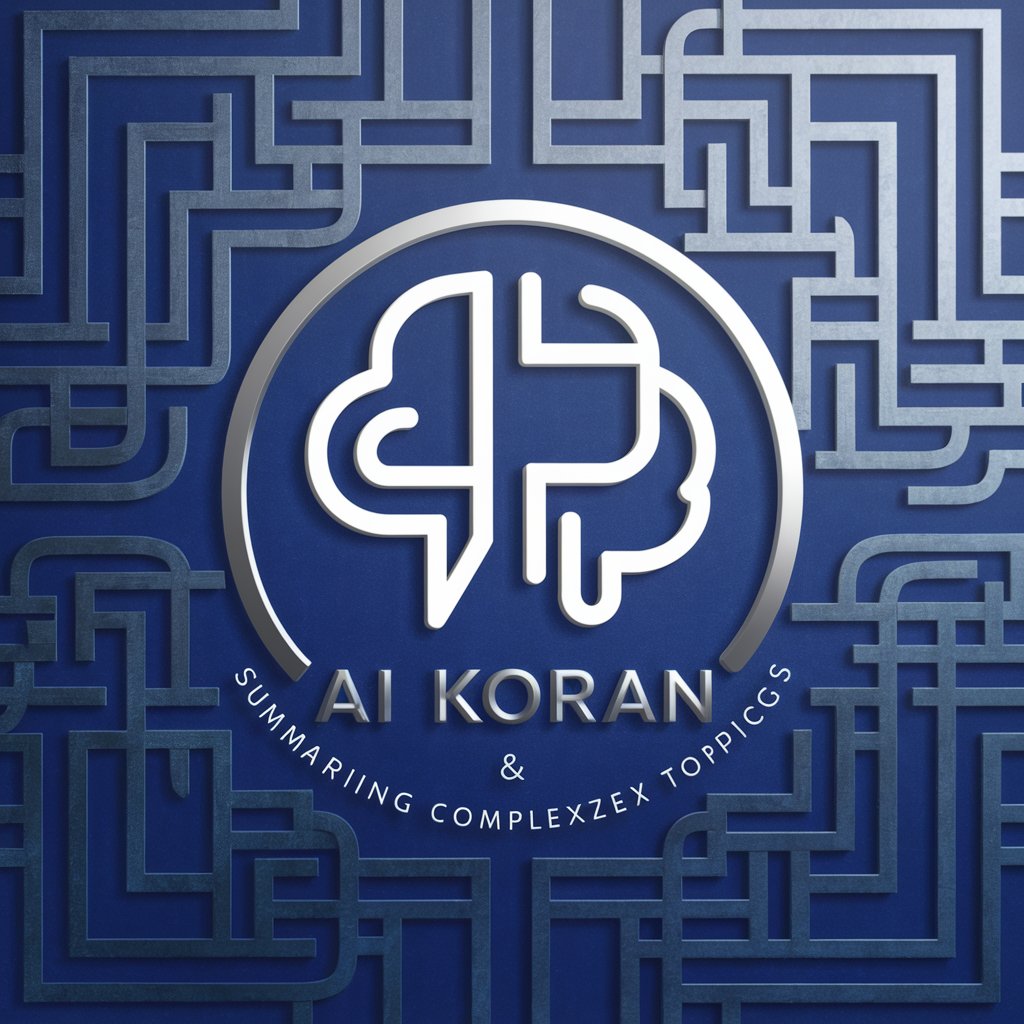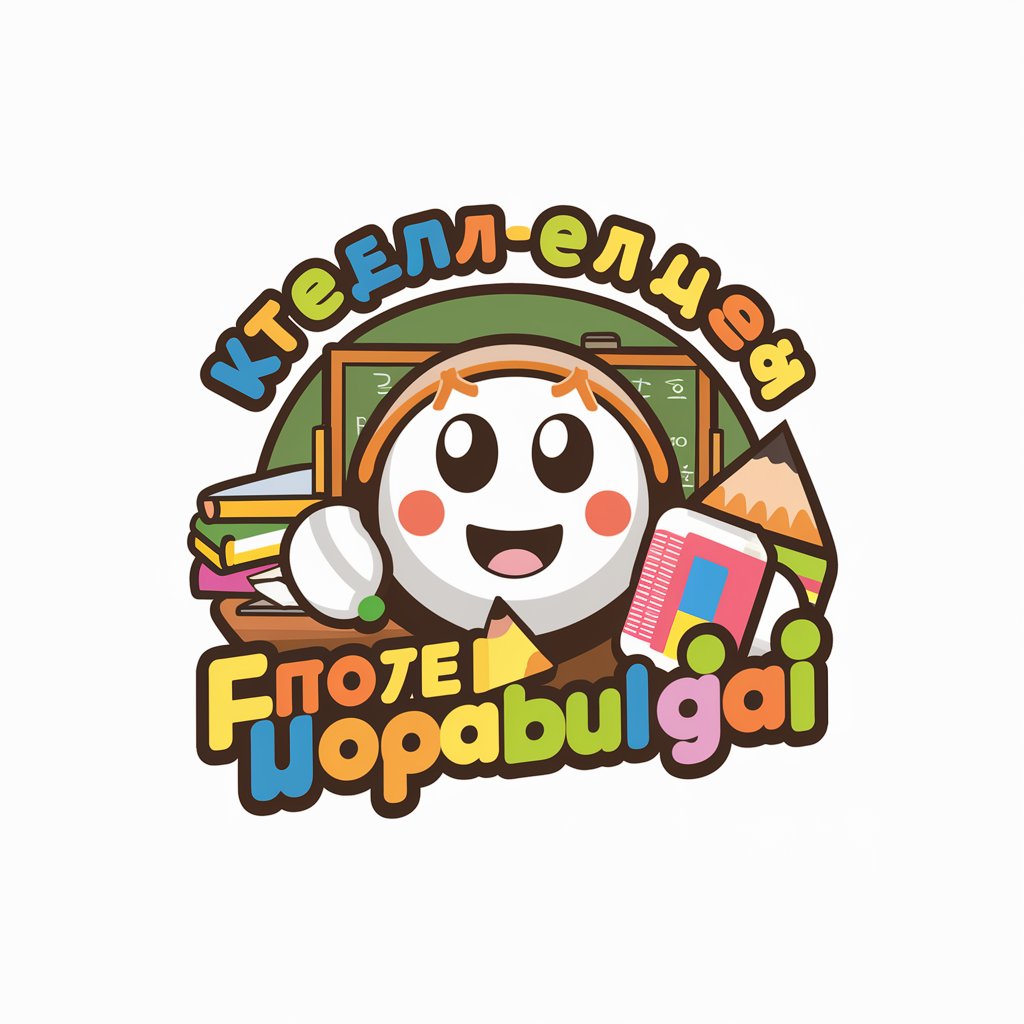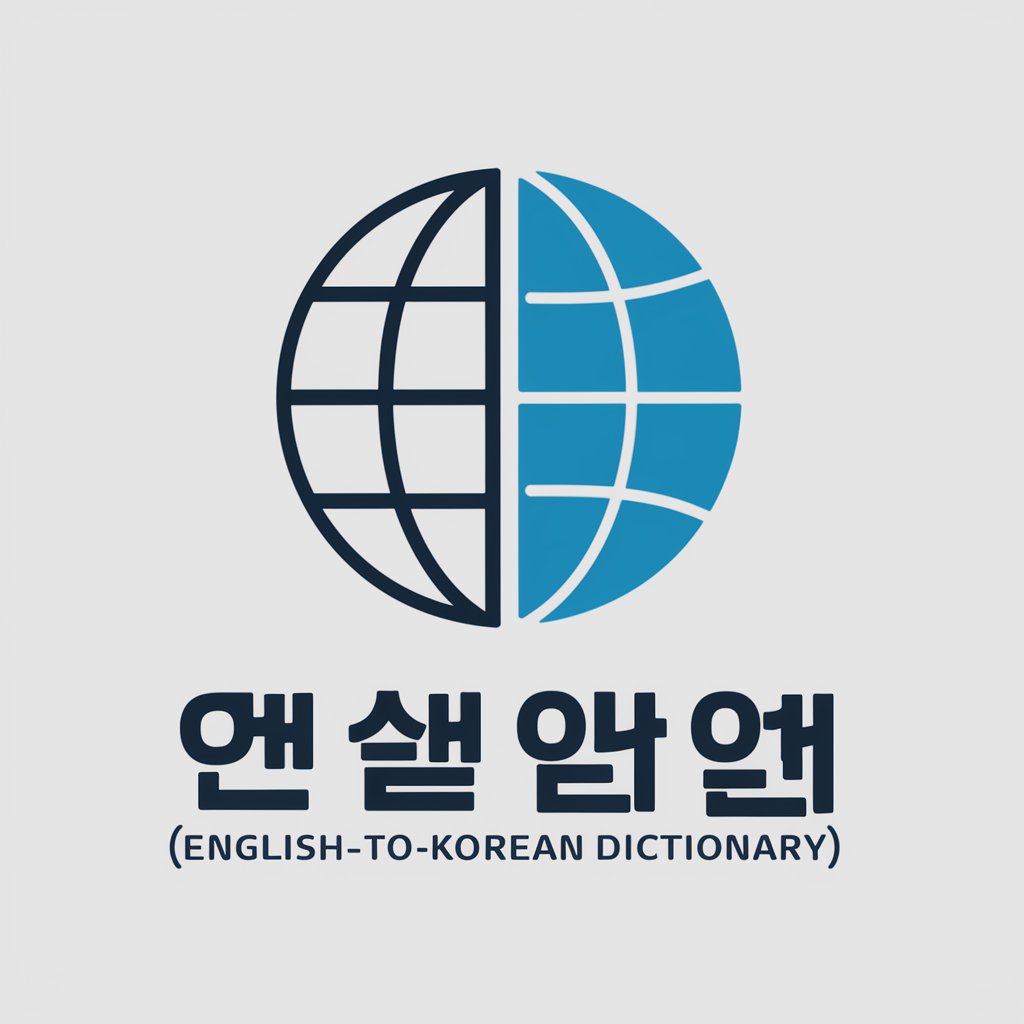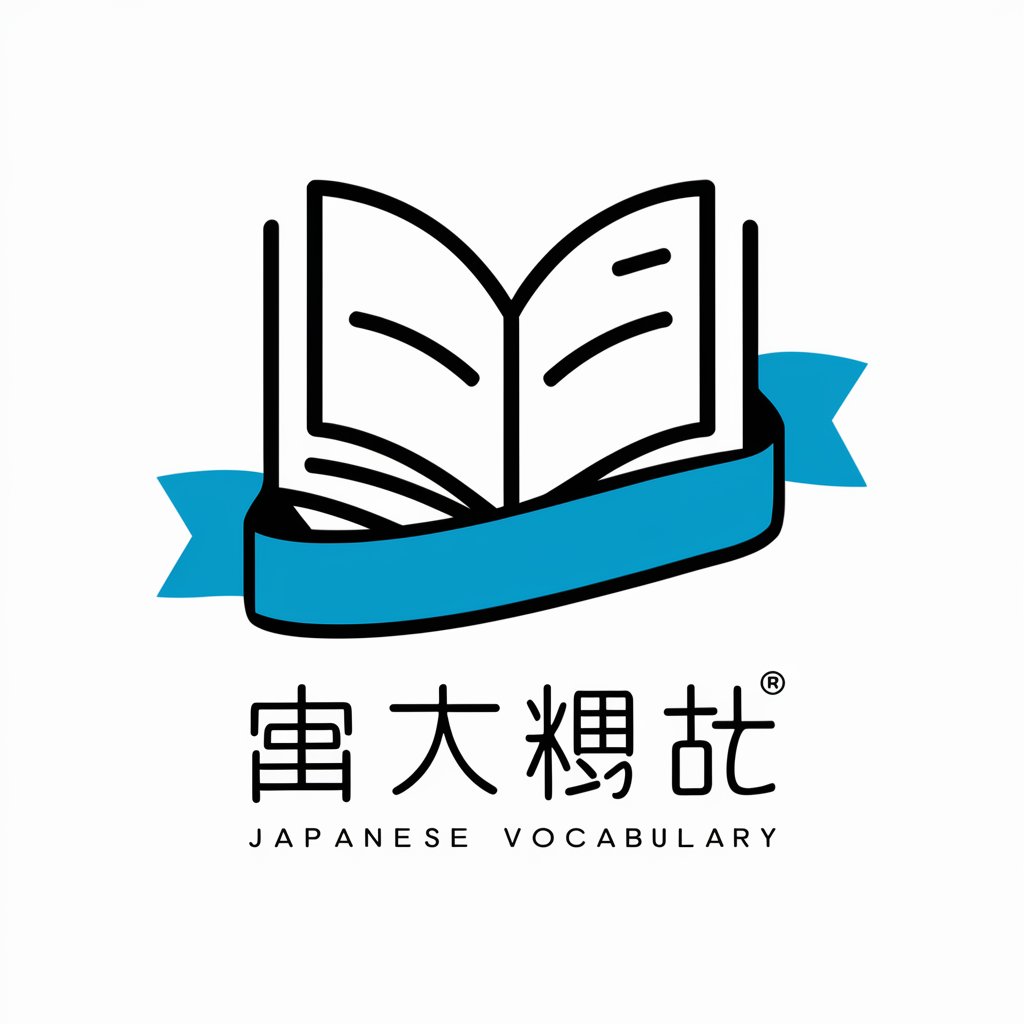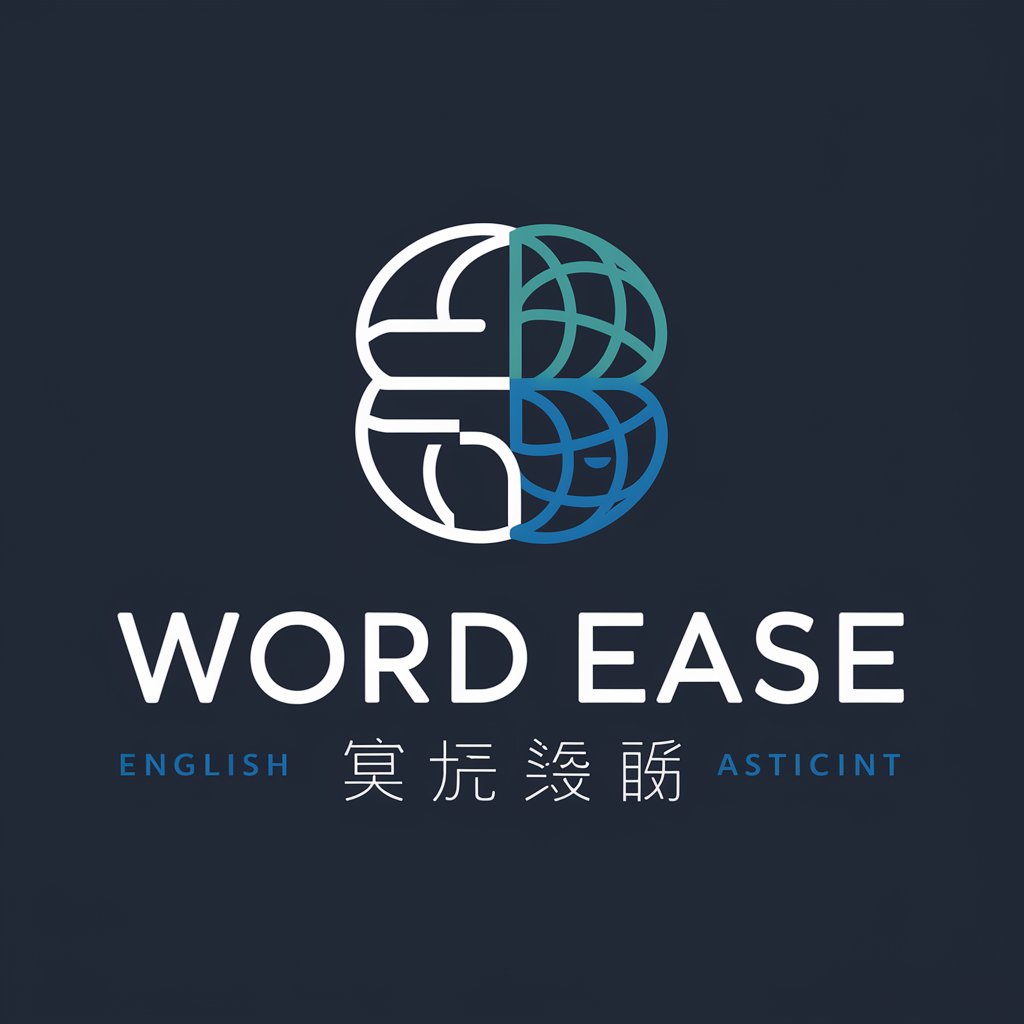
쉬운 예문 중심 한영/영한 사전 - AI-powered bilingual example dictionary

Hello! Ask me for English-to-Korean translations and copyable text.
AI-powered English-Korean Example Dictionary
주름
"South Korea to make financial markets more attractive, regulator says."
I am down.
wrinkle, crease
beaten path
"이것은 만약에 대비한 일종의 보험이야. 아무 일 없으면 그냥 버리는 돈이라 생각하면 돼"
Get Embed Code
Overview of 쉬운 예문 중심 한영/영한 사전
The 쉬운 예문 중심 한영/영한 사전 is a bilingual dictionary and language learning tool designed to help users understand English and Korean through context-rich, simple example sentences. It focuses on providing clear, easy-to-understand translations and usage patterns of words and phrases, with examples that illustrate meaning in real-world contexts. The main design purpose is to offer more than just literal translations; instead, it provides practical examples that demonstrate how phrases are used in everyday language, helping learners bridge the gap between knowing words and understanding how to use them effectively. For example, if a user inputs an English phrase like 'take your time,' the dictionary doesn't just translate the phrase word-for-word but offers multiple example sentences that show the different contexts in which 'take your time' could be used. Powered by ChatGPT-4o。

Key Features and Functionalities
Translation with Contextual Examples
Example
A user inputs the English phrase 'run late,' and instead of a direct translation, the tool provides example sentences such as 'I am running late for the meeting.' The Korean translation follows, making the meaning clear in a practical setting.
Scenario
This feature is particularly useful for users who want to understand the nuances of a phrase and how it can be applied in everyday conversation. For instance, a student preparing for an English-speaking presentation can search for terms like 'run late' to see how they can be naturally integrated into their dialogue.
Bilingual Support for Both English and Korean Inputs
Example
When a user inputs '걱정 마세요,' the tool not only provides the English translation 'Don’t worry,' but also offers example sentences that explain different situations in which the phrase might be used, such as 'Don't worry about the exam.'
Scenario
This functionality helps both Korean speakers learning English and English speakers learning Korean. A Korean user can learn how their native phrases translate into English, and an English user can learn the various applications of Korean phrases in real contexts.
Synonym and Antonym Finder with Examples
Example
If a user looks up the word 'happy,' the tool provides synonyms like 'joyful' and antonyms like 'sad,' along with example sentences: 'She feels joyful about her promotion.' and 'He looks sad after hearing the news.'
Scenario
This feature is beneficial for writers, students, or language learners looking to expand their vocabulary. For instance, an ESL student working on an essay can look up synonyms to avoid repetition and enhance their writing style.
Sentence Pattern Recognition
Example
A user types the phrase 'She is planning to' and receives suggestions like 'She is planning to travel next month' or 'She is planning to start a new job.'
Scenario
This function is ideal for learners who are trying to form more complex sentences. By seeing similar sentence structures with different content words, they can improve their sentence-building skills.
CEFR-Based Example Sentences
Example
A user searching for 'work' gets example sentences categorized by difficulty levels, such as 'I work at a bank.' (A1) and 'She has been working on this project for months.' (B2).
Scenario
This feature is tailored for students preparing for standardized language proficiency tests, like the TOEIC or TOPIK. The examples are aligned with the Common European Framework of Reference for Languages (CEFR), helping learners understand how words are used at different skill levels.
Target User Groups
Language Learners (Beginner to Intermediate)
This group includes both English and Korean learners who need practical examples to understand how words and phrases are used in real contexts. Beginners benefit from simple, clear example sentences, while intermediate learners can explore more complex structures and build their sentence-formation skills.
Teachers and Tutors
Language educators can use this tool to explain the meaning and usage of words to students. The example-based approach helps teachers show how specific terms are applied in different situations, making lessons more dynamic and understandable.
Writers and Content Creators
Writers, bloggers, and content creators can use the dictionary to find synonyms and antonyms or to clarify the meaning of certain phrases. This helps them avoid repetition and enhances the overall quality of their writing, whether in English or Korean.
Test Takers
Individuals preparing for language proficiency exams such as TOEIC, IELTS, or TOPIK can benefit from the CEFR-based example sentences that show how vocabulary is used at different difficulty levels. This helps them prepare more effectively for specific exam sections.

How to Use 쉬운 예문 중심 한영/영한 사전
1
Visit yeschat.ai for a free trial without login, also no need for ChatGPT Plus.
2
Enter the English or Korean word/phrase you want to understand better, either for translation or deeper contextual usage.
3
Choose between translation, synonym, antonym, or example sentence options to receive detailed, AI-generated explanations and example conversations.
4
Explore related content or alternative meanings by reviewing additional examples provided for each input.
5
Use the tool across multiple scenarios such as academic writing, language learning, or professional communication to enhance understanding and fluency.
Try other advanced and practical GPTs
사주팔자 명리학 - 다른 쓰레기 사주팔자와 다름. (사주, 궁합, 인생상담, 사업운)
Unlock your destiny with AI-powered 사주팔자 insights.

이하나 변호사 - 마약과 도박 사건 전문
Empowering legal decisions with AI

셰프가 메뉴 리뷰. 궁금한 요리 사진 시각화
Visualize Dishes, Explore Flavors

MBTI 사주 풀이
Unlock Personalized Life Insights

강남구 사회복지사
Empowering Gangnam with AI-Enhanced Welfare

음양오행(陰陽五行) - 사주풀이/신년운세/신년사주/사주/운세/팔자
Navigate life's journey with AI-powered 사주 insights.

면접왕 - 대기업 / 공기업 / 사기업 모의 면접!
AI-powered mock interview coach for job success

Super Baseball Simulator
Elevating Baseball Management with AI

간호GPT
Empowering nursing with AI

챗GPT 표절검사 - 표절노노
AI-powered plagiarism and AI-text detection tool

이모티콘 프렌즈 Emoticon Friends
Express creatively with AI-powered emoticons

키워드 의 신 GPT 🌟 - 월 검색량 keyword 문서수 황금 연관 키워드 마스터
AI-powered keyword research and insights

Common Q&A About 쉬운 예문 중심 한영/영한 사전
What makes 쉬운 예문 중심 한영/영한 사전 different from other translation tools?
It not only provides direct translations but also offers detailed example sentences and conversation patterns to help users understand how the words or phrases are used in real contexts. This focus on contextual usage sets it apart.
Do I need a subscription to use this tool?
No, you can start using it for free without any need for a subscription or login. Simply visit yeschat.ai to get started without requiring a ChatGPT Plus account.
Can 쉬운 예문 중심 한영/영한 사전 help with academic writing?
Yes, it’s particularly useful for academic writing as it provides synonyms, antonyms, and relevant example sentences, which can help improve your vocabulary and sentence structure in formal contexts.
How does the tool help with learning English or Korean?
The tool offers easy-to-understand example sentences for both English and Korean inputs, helping language learners improve their understanding of context, grammar, and word usage.
What languages are supported in 쉬운 예문 중심 한영/영한 사전?
Currently, the tool focuses on English-to-Korean and Korean-to-English translations and explanations, offering detailed contextual usage in both languages.
